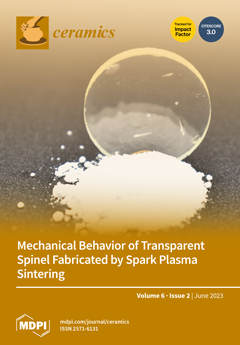The Raman polymerization index (or
IP value) is often used as a positive indicator of the firing temperature of the glazes of ancient ceramics. Previous studies have also reported that the
IP value was negatively correlated with the chemical composition of
[...] Read more.
The Raman polymerization index (or
IP value) is often used as a positive indicator of the firing temperature of the glazes of ancient ceramics. Previous studies have also reported that the
IP value was negatively correlated with the chemical composition of the glaze. However, these findings were derived from data on the potential integrative effects of temperature and composition. To explore their individual effects, we prepared celadon glaze samples with controlled composition and firing temperatures. Particularly, according to the typical content of K
2O and CaO in celadon glaze, four categories, or, in total, fifteen compositional formulations, were designed, and each formulation was fired at multiple temperatures (from 1180 to 1250 °C by 10 °C). The chemical compositions and the glassy matrix of samples were analyzed by an energy-dispersive X-ray fluorescence spectrometer and Raman spectroscopy, respectively. A positive correlation between firing temperature and
IP value (correlation coefficient = 0.56) was detected only in the samples with low contents of K
2O and CaO. However, no significant correlation was found when combining the samples with broad variation in chemical composition. Additionally, both the K
2O content and CaO content were negatively related to the
IP value, with regression coefficients of −9.645 and −5.332, respectively. Our results help to clarify the technology of ancient ceramic production and to improve its preservation.
Full article





